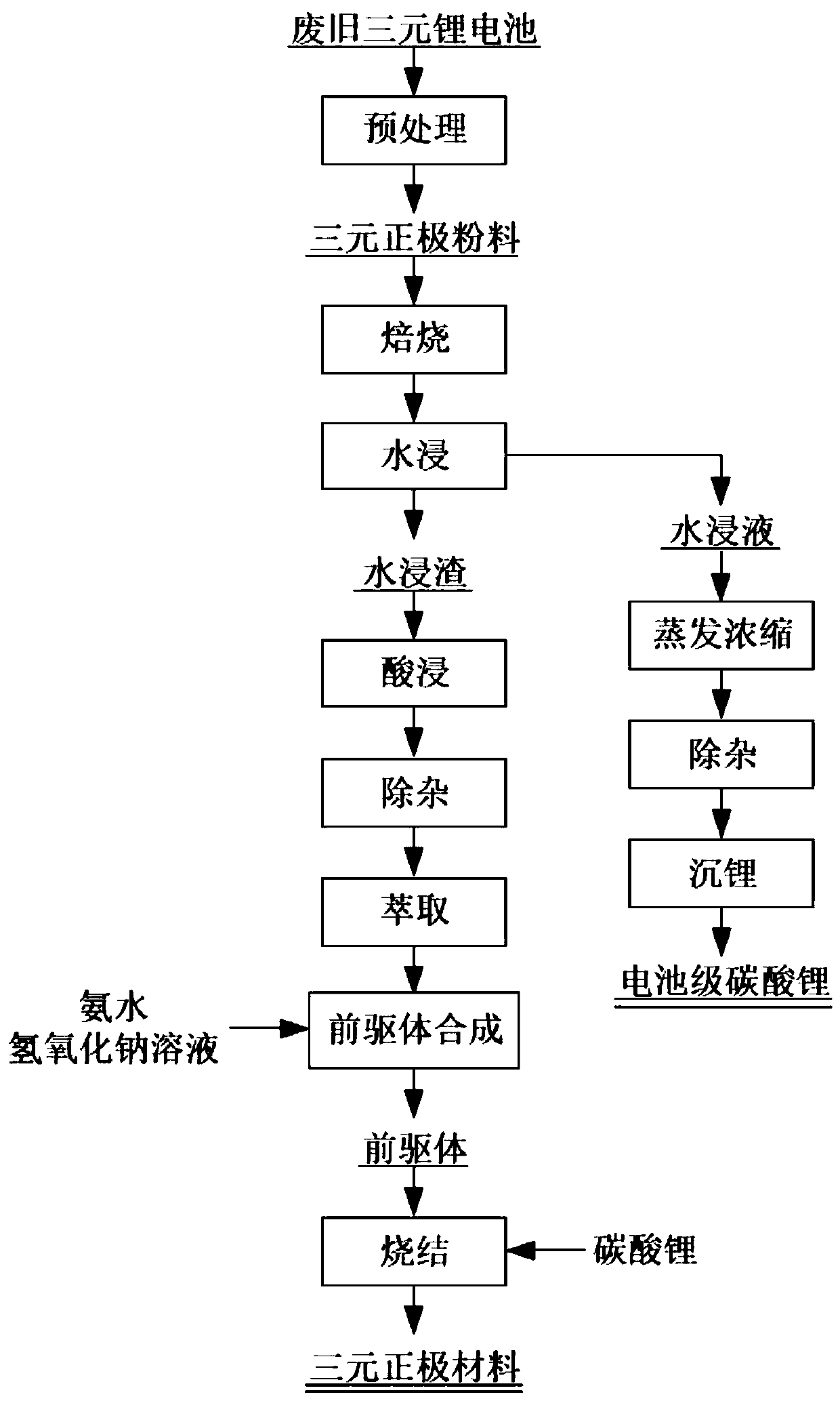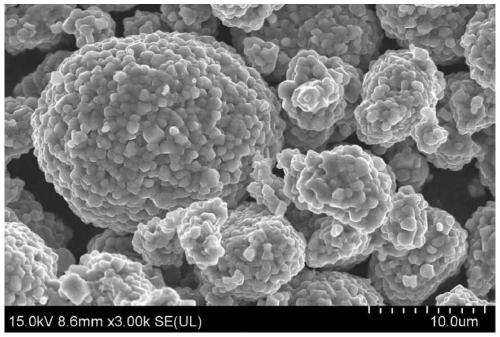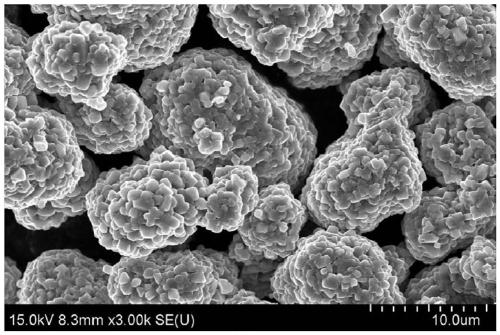Method for preparing ternary positive electrode material through recovering waste ternary lithium battery
A ternary lithium battery and cathode material technology, which is applied in battery recycling, battery electrode, waste collector recycling, etc., can solve the problems of high impurity content in precursor products, affecting the electrochemical performance of ternary cathode materials, and low recovery rate.
- Summary
- Abstract
- Description
- Claims
- Application Information
AI Technical Summary
Problems solved by technology
Method used
Image
Examples
Embodiment 1
[0062] (1) Put the waste lithium battery in a 1.5mol / L NaCl solution for discharge treatment. After the discharged waste lithium battery is cleaned and dried, it is coarsely crushed and finely crushed, and placed in a rotary kiln at 300°C under nitrogen protection. Pyrolysis, and then by sorting, 100kg of waste ternary cathode powder (Li: 11.76, Ni: 25.63, Co: 8.91, Mn: 13.38wt%) was obtained.
[0063] (2) Mix the waste ternary positive electrode powder obtained from the pretreatment with ammonium sulfate 1.2 times the theoretical amount, send it to a high-temperature furnace, and bake it at a temperature of 500° C. for 2 hours.
[0064] (3) Add pure water to leaching the roasted waste positive electrode powder with a liquid-solid ratio of 5:1, the water immersion time is 3 hours, and the water immersion temperature is 65°C. The slurry after water immersion is press-filtered to obtain a lithium-containing leaching solution, and lithium is recovered by removing impurities, conc...
Embodiment 2
[0072] This embodiment has been further optimized on the basis of embodiment 1, specifically:
[0073] S1 Enrich the concentration of lithium in the water immersion solution obtained in Example 1 to 17g / L by evaporation and concentration, then add liquid caustic soda, that is, a sodium hydroxide solution with a mass concentration of 30%, adjust the pH value to 12, and feed CO 2 Impurity ions are precipitated and separated by filtration.
[0074] S2 Add 1.1 times the theoretical amount of sodium carbonate solution to the purified lithium solution obtained by filtration, the concentration is 270g / L, react at 95°C for 2h, and then prepare battery-grade lithium carbonate by washing and drying.
[0075] In Example 2, the recovery rate of lithium was 96%, and the purity reached 99.53%.
Embodiment 3
[0077] This embodiment provides a method for recovering and preparing precursors from waste ternary lithium batteries, including the following steps:
[0078] (1) Put the waste lithium battery in a 2mol / L NaCl solution for discharge treatment. After the discharged waste lithium battery is cleaned and dried, it is coarsely crushed and finely crushed, and placed in a rotary kiln at 400 ° C under anaerobic conditions. Pyrolysis, and then by sorting, 100kg of waste ternary cathode powder (Li: 11.67, Ni: 28.87, Co: 9.82, Mn: 9.62wt%) was obtained.
[0079] (2) Mix the waste ternary positive electrode powder obtained from the pretreatment with 1.5 times the theoretical amount of sodium bisulfate, send it to a high-temperature furnace, and roast it at a temperature of 600°C for 2 hours.
[0080] (3) Add pure water to leaching the roasted positive electrode powder with a liquid-solid ratio of 4:1, the water immersion time is 3 hours, and the water immersion temperature is 60°C. The slu...
PUM
 Login to View More
Login to View More Abstract
Description
Claims
Application Information
 Login to View More
Login to View More - R&D
- Intellectual Property
- Life Sciences
- Materials
- Tech Scout
- Unparalleled Data Quality
- Higher Quality Content
- 60% Fewer Hallucinations
Browse by: Latest US Patents, China's latest patents, Technical Efficacy Thesaurus, Application Domain, Technology Topic, Popular Technical Reports.
© 2025 PatSnap. All rights reserved.Legal|Privacy policy|Modern Slavery Act Transparency Statement|Sitemap|About US| Contact US: help@patsnap.com



